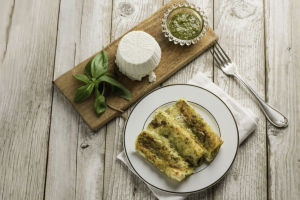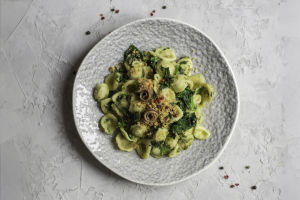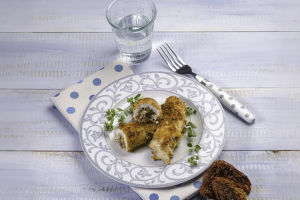Making Genovese focaccia in a home oven is not a simple task. Many attempts and recipe changes were made without achieving satisfactory results.
The difference between a home oven and a bakery oven, warm and ready for the famous Genovese focaccia at 5 a.m., is undeniable. It's what the people of Genoa have for breakfast at the bar, paired with coffee or cappuccino, and what many mothers pack in their children's school bags.
The focaccia bought during school breaks is now a skill mastered with the help of a friend's advice, who is a baker. As an adult, the secrets shared by this baker in exchange for many snacks consumed at my place during high school have finally unveiled the art of making Genovese focaccia at home.
Recipe Details
This focaccia recipe is estimated to serve six people and has a medium difficulty level with a very low cost. The preparation time is about 20 minutes, resting time around 3 hours, and cooking requires 30 minutes. The regional Italian cuisine recipe amounts to approximately 394.57 Kcal per serving.
Ingredients for the Focaccia Dough
If you prefer not to use Manitoba flour, as historically done in Genoa before its introduction, the results will still be satisfactory without it. The key ingredients for the dough include:
- 300g 00 flour
- 10g rice malt
- 200g Manitoba flour
- 5g fresh brewer's yeast
- 300ml warm water
- 20ml extra olive oil
To enhance the flavor, a brine is prepared using:
- 100ml warm water
- 10g salt
- 80ml extra olive oil
Preparation Process
The Dough
Start by mixing the liquid ingredients: warm water, rice or barley malt (a half tablespoon to activate the yeast), and yeast. Once the yeast is dissolved, add the oil followed by the combined flours with salt.
If using a machine for kneading, let it work for at least ten minutes. After the initial kneading, fold the dough multiple times with intervals of fifteen minutes for better results. Allow the dough to rest covered until it rises to the desired size. It is recommended to let it rise for three to four hours for optimal texture.
Brine and Baking
As the oven preheats to 200°C and the dough rests, place a small pot of water in the oven to aid in the leavening process. Prepare the brine by emulsifying warm water, salt, and oil. Once the oven reaches the desired temperature, spread the dough on a tray with dimples formed by pressing with fingers. Apply the brine generously, bake on the middle shelf for 25-30 minutes, occasionally brushing the remaining brine over the surface.
Tips
Before allowing the dough to rise, it is advisable to vigorously knead it on the counter. Consider doing the folds as indicated in the recipe or through a video tutorial for better results. For a more convenient baking schedule, prepare the dough in advance and refrigerate after the folding process.
When ready to bake, let the dough rise at room temperature before gently spreading it in the tray. Additionally, a baker's secret is to flip the focaccia after baking to maintain a soft top and crispy bottom akin to traditional methods. Although it may not fly like in Genoese bakeries, this technique ensures a perfect outcome.
Mastering Genovese focaccia at home may take patience and practice, but the reward is well worth the effort. While a home oven can’t fully replicate the magic of a bakery, the right techniques and a few baker’s secrets bring you closer to the authentic taste of this beloved Ligurian staple.
Whether enjoyed fresh out of the oven or packed for a midday snack, homemade focaccia carries the satisfaction of tradition and craftsmanship. So, embrace the process, savor each bite, and bring a taste of Genoa into your kitchen!


